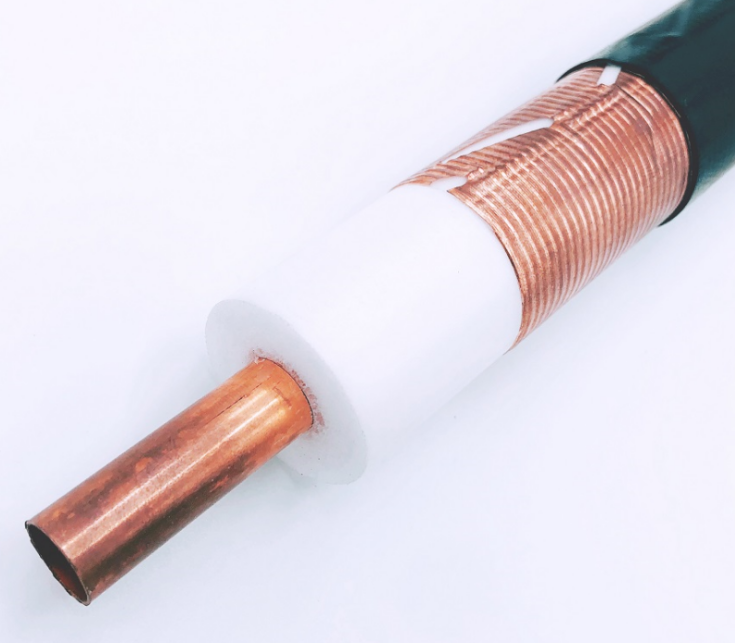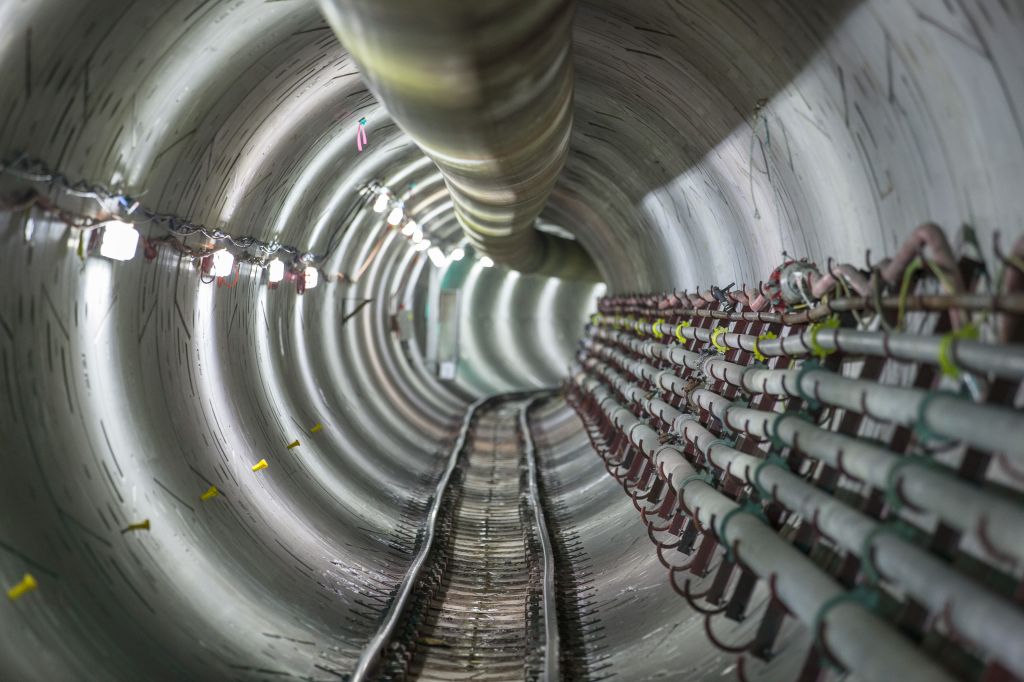In the dynamic landscape of modern communication, the demand for reliable and versatile transmission systems has never been higher.
One essential yet often overlooked component of this infrastructure is the leaky cable, also known as a leaky feeder.
These cables play a crucial role in ensuring seamless communication in environments where traditional communication methods may falter, such as underground tunnels, mines, and large buildings.
This article ZMS Cable will explore the classification and applications of leaky cables, highlighting their importance in today's interconnected world.
Leaky cables, or leaky feeders, are specialized coaxial cables designed to allow a controlled amount of radio frequency (RF) signal to "leak" out along their length. Unlike standard coaxial cables, which are designed to contain the RF signal within the cable, leaky cables are intentionally engineered to release the signal through small gaps or slots in the cable’s outer conductor. This unique design enables the cable to act as both a transmitter and a receiver, facilitating communication in areas where conventional antennas might not be practical or effective.

Leaky cables function by distributing RF signals along their entire length, creating a uniform communication field.
The cable's outer conductor is perforated with small slots or gaps, allowing the RF signal to escape at regular intervals. Compatible devices can then receive this distributed signal within the coverage area.
The design of leaky cables allows for controlled and predictable signal propagation, making them ideal for environments where consistent signal coverage is necessary.
Leaky cables can be classified based on several factors, including their construction, frequency range, and the specific applications they are designed for.
Understanding these classifications is essential for selecting the right type of leaky cable for a particular use case.
a. Radiating Cables: These cables are designed with a continuous slot or series of small slots along their length, allowing the RF signal to radiate evenly. Radiating cables are commonly used in environments where a uniform signal distribution is required, such as in tunnels or large buildings.
b. Coupled Cables: Coupled leaky cables have a series of small coupling holes along their length. These holes allow a controlled amount of signal to escape, creating a localized communication field.
Coupled cables are often used in applications where specific areas need to be covered, such as in mining operations or within subway systems.
a. Low-Frequency Leaky Cables: These cables operate in the VHF (30 MHz to 300 MHz) and UHF (300 MHz to 3 GHz) frequency ranges. They are commonly used in two-way radio communication systems and for public safety applications.
b. High-Frequency Leaky Cables: Operating in the higher frequency ranges, typically above 3 GHz, these cables are used in specialized applications, such as in-building wireless systems (IBWS) and certain military communication systems.
High-frequency leaky cables are often used in environments where high data rates and bandwidth are required.
a. Industrial Leaky Cables: These cables are used in harsh industrial environments, such as mines, tunnels, and oil rigs.
They are designed to withstand extreme conditions, including high temperatures, humidity, and mechanical stress.
b. Commercial Leaky Cables: Designed for use in commercial buildings, such as office complexes, shopping malls, and airports, these cables provide reliable communication coverage within large structures.
They are often used to extend the range of cellular networks or to provide Wi-Fi coverage in areas where traditional antennas would struggle.
c. Transportation Leaky Cables: These cables are specifically designed for use in transportation systems, such as subways, railways, and road tunnels.
They ensure continuous communication coverage for public safety systems and train control systems.
Leaky cables are utilized in a wide range of applications, each leveraging the unique properties of these cables to address specific communication challenges. Below are some of the most common applications of leaky cables.
One of the primary applications of leaky cables is in underground mines and tunnels, where traditional communication methods often fail due to the challenging environment.
The ability of leaky cables to distribute signals evenly along their length makes them ideal for these confined spaces. In mining operations, leaky cables are used to facilitate communication between workers, coordinate machinery, and ensure safety.
In tunnels, they are essential for maintaining communication with vehicles and personnel, as well as for public safety systems.

Leaky cables are widely used in in-building wireless systems to provide seamless coverage within large structures.
In environments such as office buildings, shopping malls, and airports, traditional antennas may struggle to provide consistent coverage due to obstructions such as walls, floors, and metal structures.
Leaky cables can be installed along walls, ceilings, and other structural elements to create a uniform communication field, ensuring reliable coverage throughout the building.
In public transportation systems, such as subways and railways, leaky cables are used to ensure continuous communication coverage.
They are typically installed along the length of tunnels, platforms, and stations to provide communication between trains, control centers, and emergency services.
In addition to voice communication, leaky cables are also used to support data transmission for systems such as passenger information displays and train control systems.
Leaky cables play a crucial role in emergency and public safety communications, particularly in environments where traditional communication methods may be unreliable.
In buildings, tunnels, and other confined spaces, leaky cables provide a reliable communication link for emergency services, ensuring that first responders can communicate effectively during critical situations.
They are also used in public safety networks to extend the coverage of radio systems used by police, fire, and ambulance services.
The military and defense sectors also leverage leaky cables for various communication applications.
In military installations, leaky cables are used to provide secure and reliable communication in bunkers, command centers, and other confined spaces.
They are also used in field deployments to create communication networks in areas where traditional antennas may be impractical or vulnerable to interference.
Leaky cables are commonly installed in railways and road tunnels to provide continuous communication coverage.
In railway systems, they support train control and signaling systems, ensuring safe and efficient operation.
In road tunnels, leaky cables are used to extend cellular network coverage, enabling drivers to maintain communication while traveling through tunnels.
They also support emergency communication systems, providing a critical link in case of accidents or other emergencies.
In healthcare facilities, where reliable communication is vital, leaky cables are used to ensure seamless coverage for wireless communication systems.
Hospitals and other medical facilities often have complex layouts with multiple floors and thick walls, making traditional antenna systems less effective.
Leaky cables can be installed throughout the facility to provide consistent coverage, ensuring that medical staff can communicate effectively and that wireless medical devices function reliably.

The widespread adoption of leaky cables in various industries is due to the numerous benefits they offer over traditional communication methods. Some of the key advantages of using leaky cables include:
One of the primary benefits of leaky cables is their ability to provide consistent signal coverage in challenging environments. Unlike traditional antennas, which may struggle to penetrate walls or other obstacles, leaky cables distribute the signal evenly along their length, ensuring reliable coverage throughout the entire area.
Leaky cables are highly flexible and can be installed in a variety of environments, from underground mines to skyscrapers.
Their versatility makes them suitable for a wide range of applications, including voice communication, data transmission, and emergency services.
In environments where safety is a concern, such as in mines or tunnels, leaky cables provide a reliable communication link that can be crucial in an emergency. They ensure that workers and emergency responders can communicate effectively, reducing the risk of accidents and improving overall safety.
Leaky cables are often more cost-effective than installing multiple antennas or other communication infrastructure. They can be installed along existing structures, such as walls or ceilings, reducing the need for additional hardware and minimizing installation costs.
Because leaky cables distribute the signal along their length rather than broadcasting it from a single point, they are less susceptible to interference from other wireless devices.
This makes them ideal for environments where multiple communication systems are used, such as hospitals or large office buildings.
Leaky cables are essential to modern communication systems, providing reliable and consistent coverage in environments where traditional methods may fail. Their unique design, which allows for controlled signal leakage, makes them ideal for a wide range of applications, from underground mines to skyscrapers